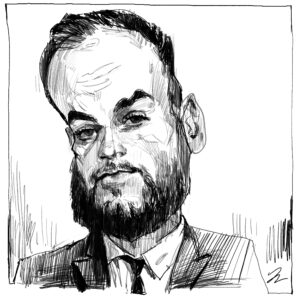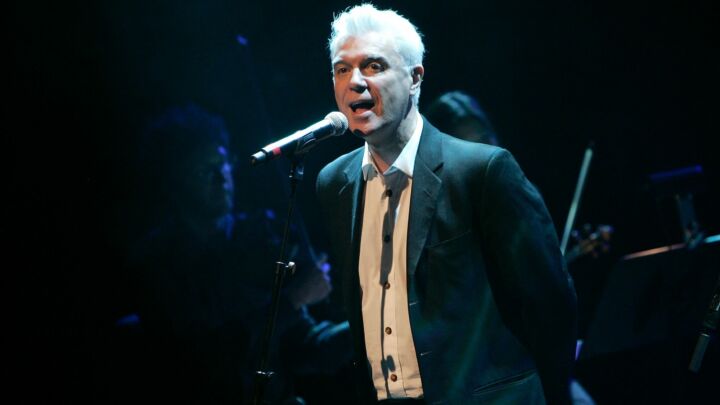Liberation by snapshot?
The killing of Uday and Qusay, and the photos to prove it, are the latest gestures in the coalition’s war of symbols.

Want to read spiked ad-free? Become a spiked supporter.
‘Deaths will bring Iraqis real liberty….’ So said a headline in yesterday’s UK Sun, as political editor Trevor Kavanagh claimed that the ‘richly deserved deaths’ of Saddam Hussein’s sons Uday and Qusay had finally given Iraq ‘the chance to shake off 35 years of repression and claim its place as a major voice in the Arab world’ (1).
How could the killing of two former Ba’ath Party henchmen who have been on the run for four months lead Iraq into a bright new free and Arabic future? The widespread hope that the deaths – and the grisly photos to prove them – will turn Iraq around reveals much about the coalition’s hollow campaign.
The coalition and its supporters are staking a lot on the killing of Uday and Qusay. According to one report, ‘the way is now clear for democracy to flourish’ (2). Others hope that the deaths will be an ‘important morale boost for the increasingly demoralised occupation forces’ (3), and a ‘useful distraction for the White House, which is under intense scrutiny for its misleading prewar claims’ (4).
An Iraqi civic leader says the deaths ‘might turn the tide in favour of the coalition’, by finally bringing the sporadic violence against US troops to an end (5). American military analyst Ralph Peters says the killings ‘could be more important in the long run than the fall of Baghdad’, finally showing the world, and more importantly Iraqis, that Saddam is a ‘man of the past’ (6).
Of course two deaths cannot resolve political crises, deliver democracy or end violence – even if the dead are, as US officials helpfully remind us, the Ace of Hearts and the Ace of Clubs in America’s playing-card guide to evil Iraqis. That much is clear from the fact that, since Uday and Qusay were killed on Tuesday, five Americans have been killed, bringing the total number of US deaths for the past week to 11 – the highest weekly rate since the war officially ended in mid-April (7).
Rather, the idea that Uday and Qusay’s deaths represent the liberation of Iraq and the vindication of the war indicates that this is still very much a campaign of style over substance. Throughout the Iraqi venture, American and British forces carried out symbolic stunts and searched for ‘defining images’ as a means of ‘demonstrating’ that they had ‘liberated Iraq’ (8).
Americans blew up a 40-foot statue of Saddam in order to ‘send a powerful message to remnants of the regime’ (9); Brits launched a dawn raid to knock down two statues in Basra ‘to show the people…we will strike on any representative token of that regime’ (10); even when US forces seized Saddam’s New Presidential Palace in early April, it was described as being a more symbolic than strategic target (11).
In wars of old, it was usually after declaring victory that the winners would put on massive displays of symbolic force and topple symbols of the defeated regime. In Iraq, such gestures took place before the war had ended, as part of the campaign to ‘liberate Iraq’. In a war where the very aim was to ‘send a message’ and project a positive image of the coalition forces, toppling statues was seen as being just as important as winning cities.
By the same token, the deaths of Uday and Qusay are now talked up as ‘more important than the fall of Baghdad’ – not because there’s any evidence yet that the Hussein brothers were organising operations against the coalition forces, but because their deaths apparently ‘send a message’ to Iraqis and the world. As Ralph Peters claims, ‘The symbolism is almost biblical…. And as our symbolism goes up, theirs goes down. Far from driving us out of Iraq, we go in and kill [Saddam’s] sons’ (12).
So the battle in Iraq is a battle of symbols – with America apparently symbolising Good, and Uday and Qusay symbolising Evil. From this view, killing Uday and Qusay was the equivalent of knocking down a statue, or some other ‘representative token’ of the old regime. The shootout in Mosul on Tuesday was less a clash between US forces and threatening hostile elements, than yet another image war played out in real time.
This same obsession with the symbolic informed America’s decision to release Uday and Qusay’s death photos. After 24 hours of internal doubt and debate, the Pentagon decided that making the pictures public was in the best interests of the Iraqi people. Why? Because it will finally convince them that they are free, thus transforming Iraq’s fortunes.
According to one report, US forces may even allow broadcasters and journalists (those all-important communicators of ‘messages’) to film and photograph Uday and Qusay’s bodies, as part of the mission to ‘convince Iraqis that they are free of the former repressive regime’ (13).
US defence secretary Donald Rumsfeld has justified the publication of the pictures with reference to the killing of the Romanian tinpot dictator Nicolae Ceausescu in 1989: ‘It was not until the people of that country saw him, saw his body, that they actually believed that the fear and the threat that his regime posed to them was gone.’ (14) According to Paul Bremer, America’s man in Iraq, ‘The strategic importance of the killings, of their being dead, is to help us persuade the Iraqi people that [we have] liberated the country’ (15).
In this psychological view of postwar Iraq, all that Iraqis need is to see a photo or two of their dead former rulers in order to realise that they are free. Iraqis are seen as being either in thrall or in fear of the former regime, and America’s role is to snap them out of it with the aid of some snapshots. In short, the barrier to Iraqi liberation is the people’s own fearful mindset.
Of course, there’s much more to it than that. It is one thing to chase a failing regime out of a failing state, to topple statues and to kill two has-been dictators in a six-hour shoot-out in Mosul. It is quite another to create something of substance to put in their place. As postwar Iraq remains a mess, the attempt to ‘convince’ Iraqis with images and stunts that the war was good and their liberation is imminent, looks increasingly like an attempt on the part of the coalition to convince itself of its own role in the world.
Read on:
spiked-issue: War on Iraq
(1) ‘Deaths will bring Iraqis real liberty’, Trevor Kavanagh, Sun, 24 July 2003
(2) ‘Deaths will bring Iraqis real liberty’, Trevor Kavanagh, Sun, 24 July 2003
(3) How US troops cut off Saddam’s bloodline – and maybe his lifeline, Julian Borger, Guardian, 23 July 2003
(4) How US troops cut off Saddam’s bloodline – and maybe his lifeline, Julian Borger, Guardian, 23 July 2003
(5) How US troops cut off Saddam’s bloodline – and maybe his lifeline, Julian Borger, Guardian, 23 July 2003
(6) How US troops cut off Saddam’s bloodline – and maybe his lifeline, Julian Borger, Guardian, 23 July 2003
(7) Resistance has its roots in the present, Jonathan Steele, Guardian, 25 July 2003
(8) See Power trips, by Brendan O’Neill
(9) See Power trips, by Brendan O’Neill
(10) New peril from Iraq, Sacramento Bee, 30 March 2003
(11) See Power trips, by Brendan O’Neill
(12) How US troops cut off Saddam’s bloodline – and maybe his lifeline, Julian Borger, Guardian, 23 July 2003
(13) US criticised for Saddam sons’ photos, NDtv, India, 25 July 2003
(14) Rumsfeld ‘glad’ he released grisly Iraq photos, Charles Aldinger, Reuters, 24 July 2003
(15) Rumsfeld ‘glad’ he released grisly Iraq photos, Charles Aldinger, Reuters, 24 July 2003
Celebrate 25 years of spiked!
A media ecosystem dominated by a handful of billionaire owners, bad actors spreading disinformation online and the rich and powerful trying to stop us publishing stories. But we have you on our side. help to fund our journalism and those who choose All-access digital enjoy exclusive extras:
- Unlimited articles in our app and ad-free reading on all devices
- Exclusive newsletter and far fewer asks for support
- Full access to the Guardian Feast app
If you can, please support us on a monthly basis and make a big impact in support of open, independent journalism. Thank you.








Comments
Want to join the conversation?
Only spiked supporters and patrons, who donate regularly to us, can comment on our articles.